Christmas on Tristan 2025 |
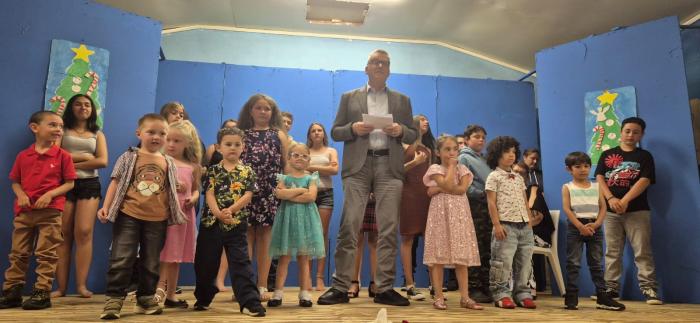 |
| Everything closes on Tristan for the three week Christmas and New Year break, but there is plenty happening. 27-Dec-2025 |
|
Stamp issue: Communication on Tristan da Cunha |
 |
| Stamps chronicling the remarkable evolution of communication on the world's most remote inhabited island, from mail ships to the digital age. 6-Aug-2025 |
|
New Solar Electricity Project gets underway
Report from Head of Tourism Kelly Green
with photos from Administrator Philip Kendall and Paul Repetto.

Photo taken on 13th March 2025 showing solar panels on the east side of the Administration Building
Over the past year, during routine maintenance work, it became clear that Tristan da Cunha's five electrical substations required significant refurbishment. Substations are a vital part of the island's electrical infrastructure, as they transform voltage from high to low and distribute electricity safely to homes, public buildings, and essential facilities. After careful planning and approval, the island was finally given the go-ahead to proceed with this important project, funded by the UK Foreign Commonwealth and Development Office.
On 26th January 2025, Tristan welcomed back Richard Noble, who had previously worked on electrical systems at the fish factory. This time, Richard returned with a skilled team of eight. They arrived on a beautiful Sunday afternoon, but there was no time for rest, work began pretty much immediately on the substations.
Over the next two and a half weeks, Richard's team, in close collaboration with the Electrical & Plumbing (E&P) Department, successfully replaced all five of the island's substations. They worked tirelessly in all conditions, even erecting gazebos to keep working through rain. The dedication and efficiency of the team were outstanding, and the work was completed to a high standard in a remarkably short time.
After this initial phase, five members of the team returned home. However, Richard and three remaining team members stayed on to continue further electrical upgrades across the island.
Electricity on Tristan da Cunha is currently supplied by diesel generators housed at the island's power station. These generators were installed following a fire at the fish factory in 2008, and they provide electricity to the entire settlement. As with much of the world, however, Tristan is actively exploring renewable energy options, particularly solar power.
The first step in introducing solar energy began with the Administration Building, known locally as "the new building," although it was opened in 1969. Before any solar equipment could be installed, the building required a complete rewiring. With the help of the E&P team, this was completed to a very high standard.
Following this, an inverter room was installed. Inverters are a critical part of a solar power system - they convert the direct current (DC) electricity generated by the solar panels into alternating current (AC), which is the type of electricity used in homes and buildings.
Next came the installation of 42 solar panels across the front and back of the building. The process went smoothly, and the panels are now fully operational. They provide electricity to the entire Administration Building as well as to the container which houses the essential Starlink internet system.

Photo taken on 10th March 2025 showing work continuing to install solar panels
on the east-facing roof of the Administration Building on 10th March
This project has been a great success, and there is strong hope that similar solar panel systems will be rolled out across other departments and buildings in the future.
But the work didn't end there. Since completing the solar installation, Richard and his team have also been busy stripping and rewiring the entire Mechanical Building and installing new lighting in the Vehicle Building.
A massive well done to Richard and his team and of course to Paul Repetto and the E&P Department for their outstanding work and dedication to improving Tristan's infrastructure and supporting a more sustainable future.

Photo by Geraldine Repetto showing the solar project team with Philip Kendall at the Residency on 8th February 2025.
Richard Noble is second from the right on the front row.
Images showing the first phase of the project on upgrading and replacing electrical sub-stations

One of the five completed sub-stations

Work on a sub-station close to the Administration Building

Close-up of internal work on a sub-station

Work on a sub-station featured in the top photo
 |
 |
| Further work in progress | |

Further sub-station nearing completion
Previous Tristan renewable energy projects
Attempts were made in the 1970/80s to heat water using solar energy when devices were installed on the roofs of Colt bungalows used mainly to house expat workers. Also a wind turbine was installed in 1982 which for a short time produced electricity before being destroyed in a gale. See: https://tristandc.com/renewableenergy1980s.php
More recently in 2015, Enviroconsult installed water heaters and a solar farm on the island.
Three solar water heaters were installed on Tristan homes. Initial reports were positive as the systems were working successfully and so saving bottled gas which is used to heat water and for cooking in Tristan houses.
In 2015 a Solar Farm has been constructed west of the fishing factory on Hottentot Fence field. It consists of 26 solar panels, aligned to face the northern midday sun and each capable of generating 250 watts, so a combined capacity of 6.5kW. See: https://www.tristandc.com/renewableenergy.php
We aim to report more fully on the success of the 2025 solar project, and on what happened to the 2015 installations in the August Newsletter and on the website.
Successful re-roofing after November 2019 Storm |
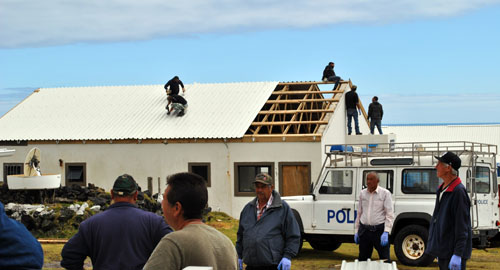 |
| 'All Hands Day' achieves target as three key buildings repaired 6-Nov-2019 |
|
Tristan represented at Small Satellite Business Conference |
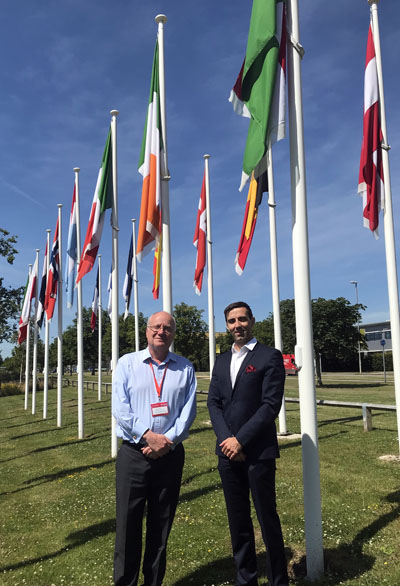 |
| Chris Carnegy attends event at European Space Agency 31-Jul-2019 |
|
Baltic Trader returns to Tristan service |
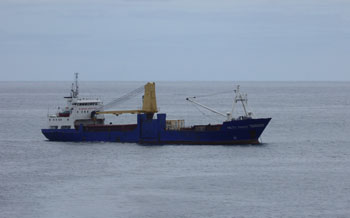 |
| MV Baltic Trader's October - November 2017 voyage 14-Nov-2017 |
|
From Tristan to St Kilda |
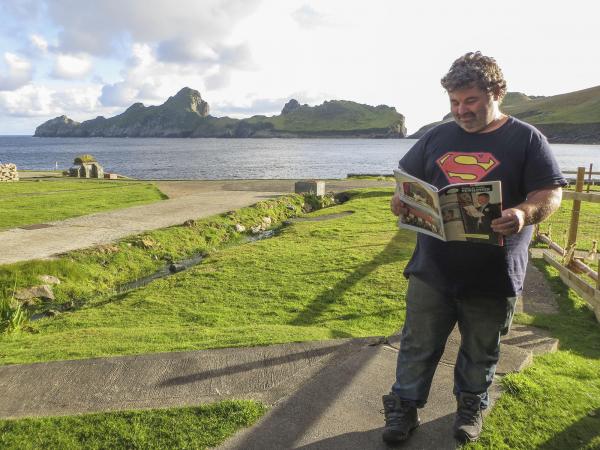 |
| Galliford Try contractor Sponge Jones who worked on the Camogli Healthcare Centre is currently working on a project on St Kilda, the remotest of the British Isles. 2-Oct-2017 |
|
- School's Hospital Artwork (12-Jul-2017) >>
- Chief Islander's Speech at the New Healthcare Centre Opening (18-Jun-2017) >>
- Camogli Healthcare Centre Opens (12-Jun-2017) >>
- Contractors Depart as centre is completed (9-Jun-2017) >>
- Contractors thanked as Healthcare Centre is completed (8-Jun-2017) >>
- Latest photos of the new Healthcare Centre (5-Jun-2017) >>
- Camogli Healthcare Centre construction update (26-May-2017) >>
- Nine Contractors Depart (23-May-2017) >>
- Latest Camogli Heathcare Centre Construction Update (9-May-2017) >>
- Latest Heathcare Centre Construction Update (28-Apr-2017) >>
- Photos show Healthcare Centre taking it's final shape (11-Apr-2017) >>
- Healthcare Centre building progress continues apace (31-Mar-2017) >>


